BIRN’s ‘Reporting House’ exhibition opened on Monday in Pristina with an appeal to Kosovars to share their untold stories of the 1998-99 war.
At the entrance to Prishtina’s landmark ‘Germia’ department store stands an old Land Rover, recently transported from London. It’s a homecoming, of sorts.
Inside, the voice of Vaughan Smith, founder of London’s Frontline Club, tells the car’s story to interested visitors.
“This vehicle went everywhere, not just with me,” he says on a recording, recounting how it was hit at least 11 times during fighting between Serbian security forces and Kosovo Albanian guerrillas in 1998-99. The windscreen still bears the mark of a sniper’s bullet.
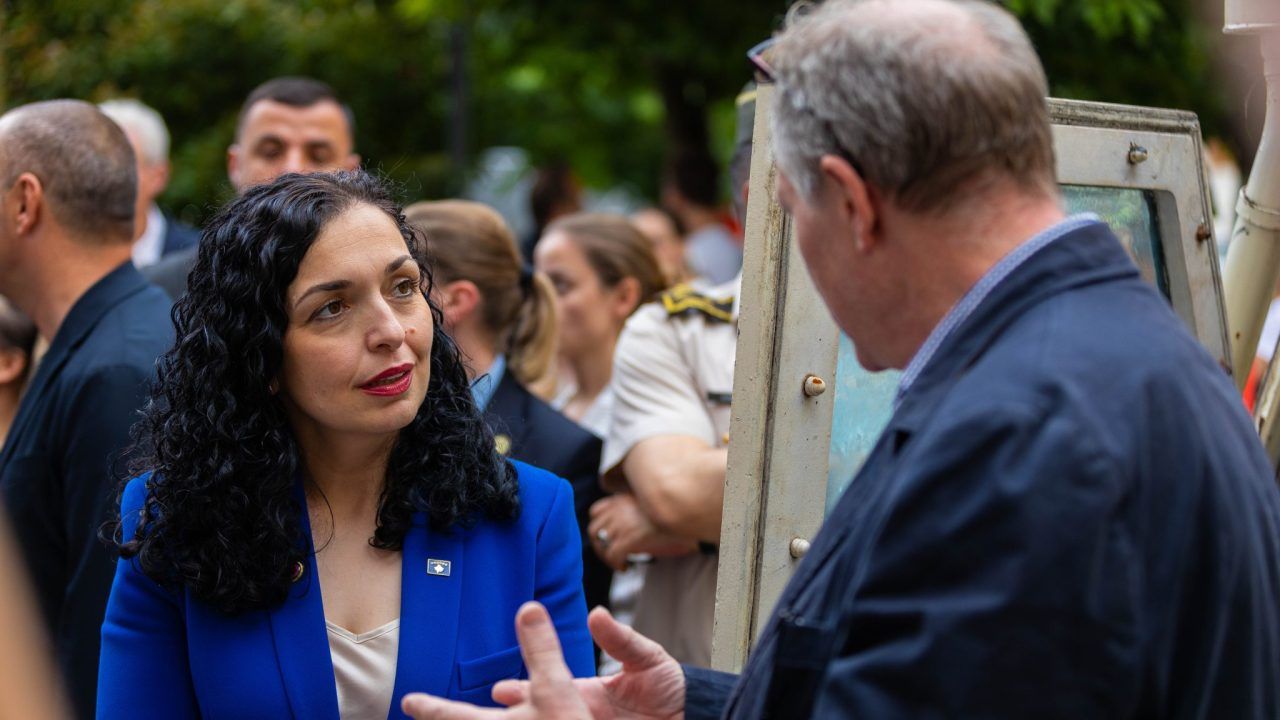
Vaughan Smith (R) talking to Kosovo President, Vjosa Osmani (R), next to the old armored Land Rover car he used to report on the Kosovo war, he recently brought back for BIRN’s ‘Reporting House’ exhibition. Photo: BIRN/Naser Fejza
Smith’s Land Rover, which helped him get exclusive shots of the Serbian police besieging the home of Kosovo Liberation Army, KLA, commander Adem Jashari in March 1998, is part of a three-month exhibition dedicated to media coverage of the war in Kosovo 25 years since it ended, as well as how artists have interpreted its legacy.
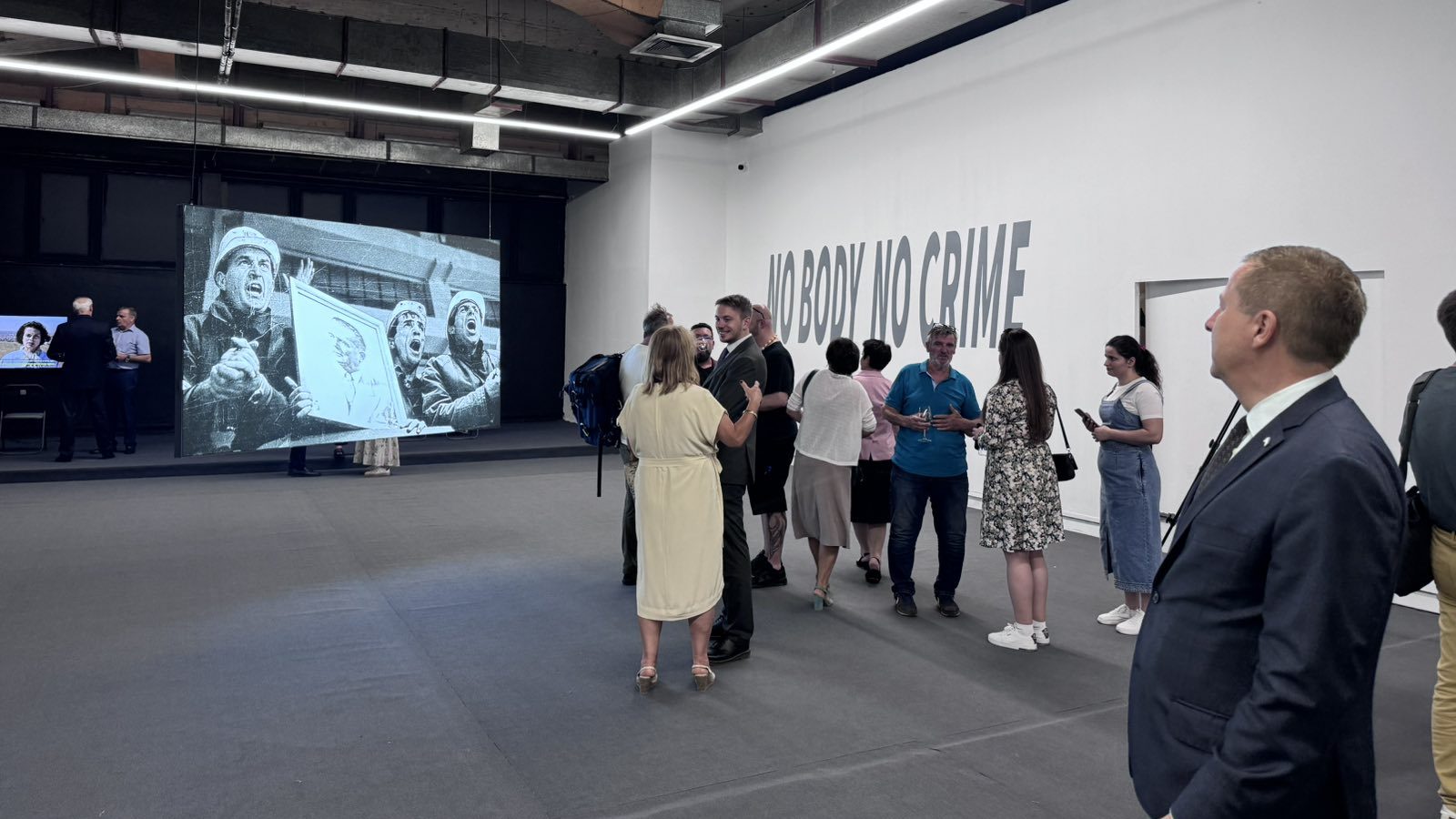
Visitors at the opening of BIRN’s ‘Reporting House’ exhibition on Monday, June 11, 2024. Photo: BIRN/Emirjeta Vllahiu
Presented by BIRN Kosovo, KALLXO.com, Prishtina Biennale and Paper Gallery, the ‘Reporting House’ exhibition opened on Monday, June 10, the anniversary of the end of 11 weeks of NATO air strikes to drive out Serbian forces under then strongman Slobodan Milosevic.
Kosovo President Vjosa Osmani, Albanian Prime Minister Edi Rama, and Prishtina Mayor Perparim Rama were among those who attended the opening.
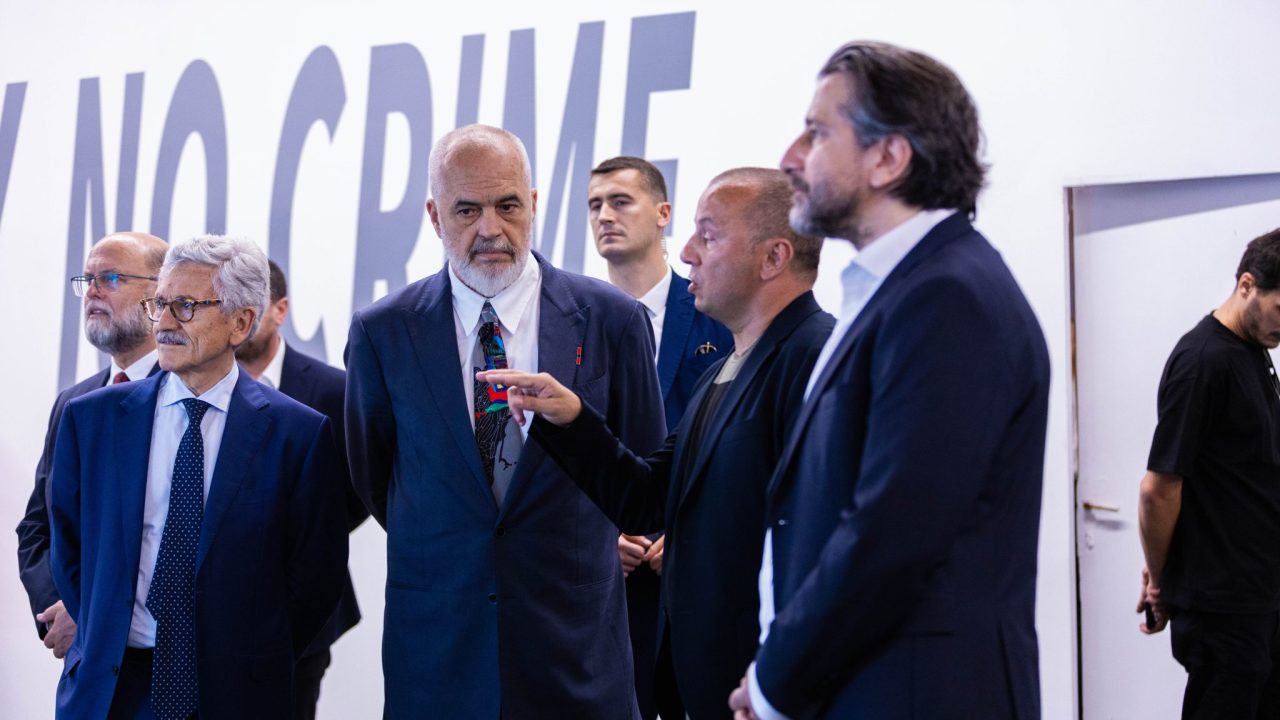
Gazmend Ejupi (C), the curator of the exhibition, explaining the concept to Albanian PM, Edi Rama (L), and the mayor of Prishtina, Perparim Rama (R) on Monday. Photo: BIRN/Naser Fejza
The exhibition features television screens showing over 100 news reports from the period February 1988-March 2000, as well as light boxes displaying the work of photojournalists Ridvan Slivova, Eliza Hoxha, Alan Chin, and Hazir Reka.
One of Slivova’s pictures shows the so-called ‘Bread for Drenica’ march of March 16, 1998, when Kosovo Albanian women holding bread tried in vain to break the siege of the Drenica valley, the KLA heartland that was surrounded by Serbian forces.
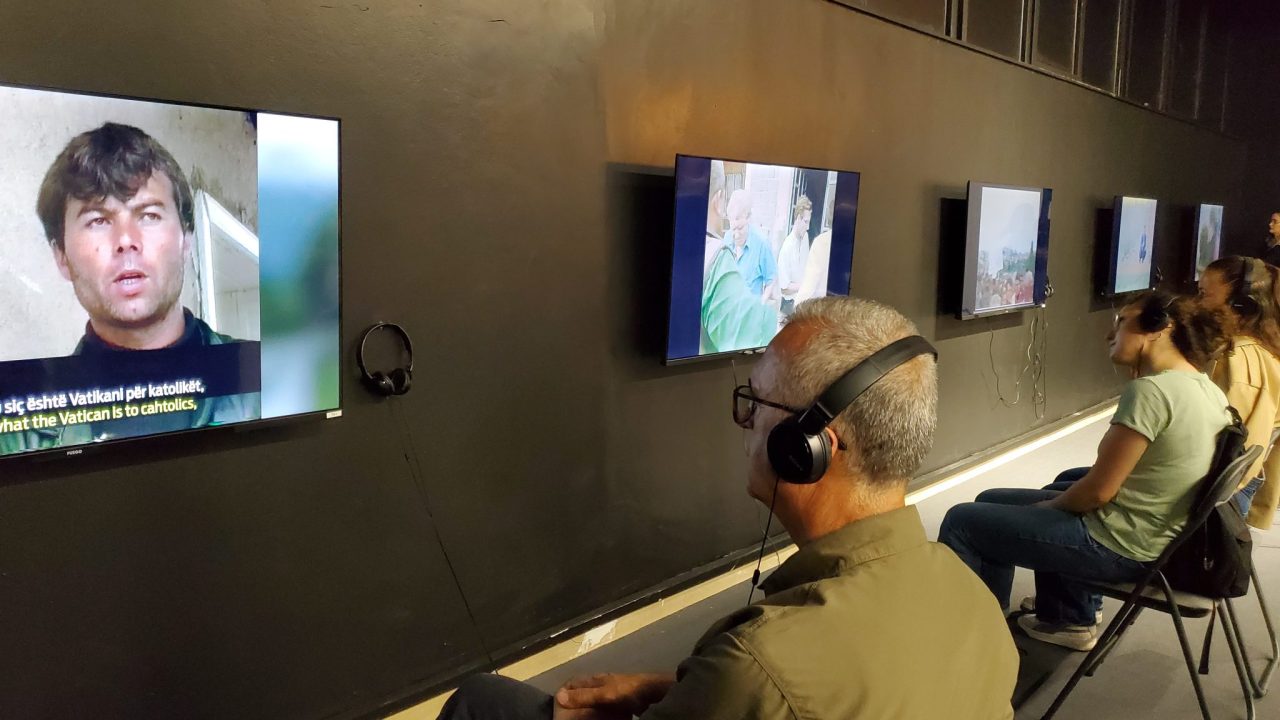
Visitors watching wartime reports. Photo: BIRN/Xhorxhina Bami
Among dozens of other photos are those of Besnik Mehmeti, an ethnic Albanian photographer from neighbouring North Macedonia who documented the plight of a million Kosovo Albanians driven from Kosovo in a wave of ethnic cleansing. Mehmeti’s photos had never before been shown in public.
“The main lesson is that we should protect the truth at any cost, as the international media with their collaborators here in Kosovo protected the truth with regards the Serbian crimes and made sure to tell our truth at a time when we had no voice, information technology or social media,” said Osmani, who was a child during the war.
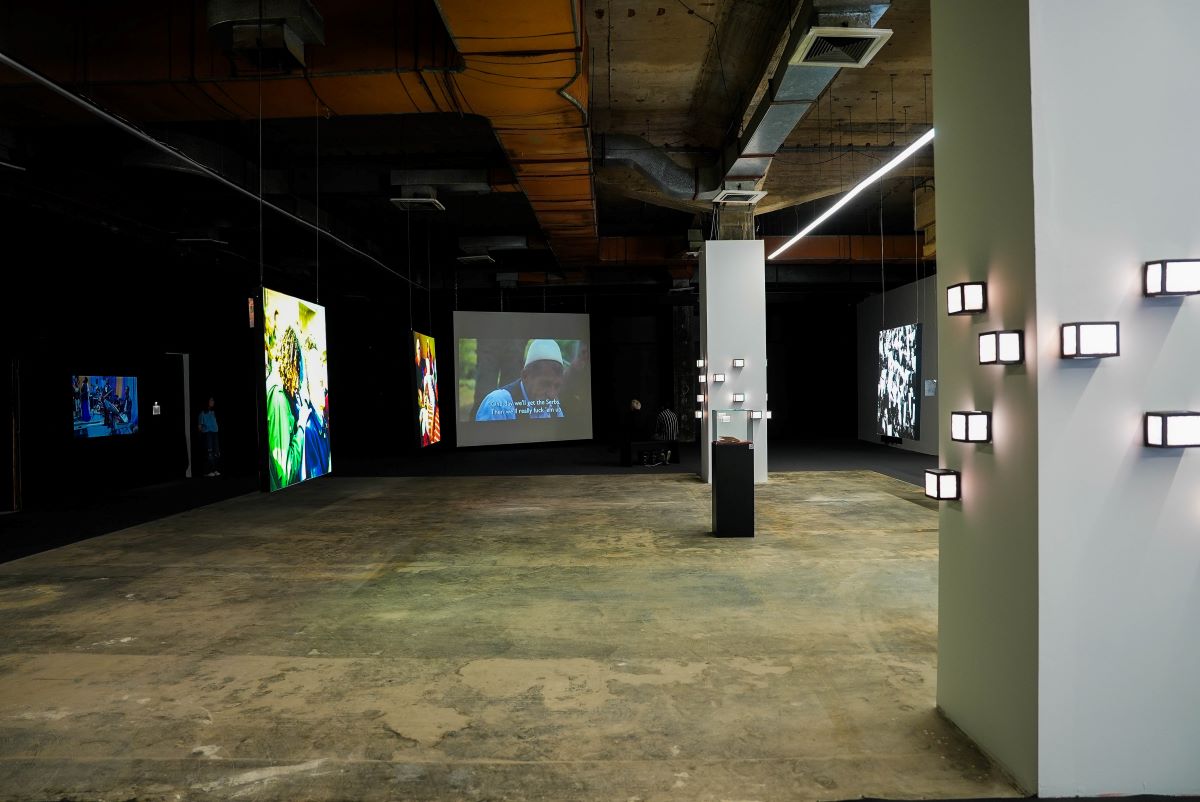
BIRN’s ‘Reporting House’ exhibition in Prishtina, Kosovo. Photo: BIRN/Naser Fejza
Among the exhibits are personal items saved by Kosovars as painful reminders of the war. They include a notebook that belonged to the children of the Jashari family, who were among dozens killed during the attack on the family compound. The notebook was kept by Kosovo psychologist Donika Shahini Lami, who covered the war as a journalist.
“This notebook is the most important thing I have, after my two daughters,” Shahini Lami said at the opening of the exhibition on Monday. “The notebook presents a story,” she said. “Those children had dreams, they were like everyone else.”
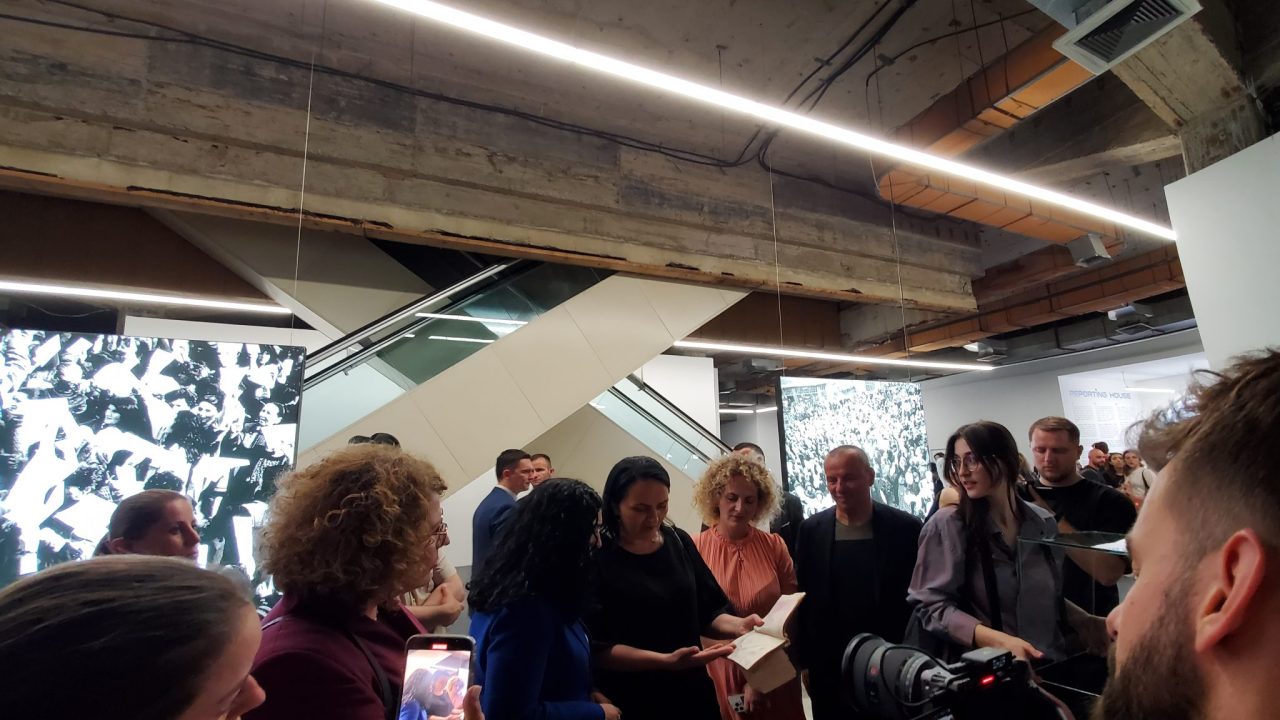
Donika Shahin Lami (C) showing the notebook of the children of the Jashari family to visitors of the exhibition. Photo: BIRN/Xhorxhina Bami
The exhibition is due to run until September 10, during which time visitors will have the opportunity to tell their own wartime stories in a special testimony room.
Emir Suljagic, who is director of the memorial centre in Srebrenica dedicated to the memory of some 8,000 Bosniak men and boys killed by Bosnian Serb forces in 1995, said that while many survivors of the Yugoslav wars of the 1990s had testified in court, thousands more have stories to tell that “are important for our history”.
In a Facebook post on Monday, the Embassy of Great Britain in Kosovo has said that “a much needed “first draft of history” for the events of 25 years ago deserves support to find a permanent home”.
“We are proud to have made a modest contribution to ensuring the presence of journalists from Great Britain and their archive footage, as we are of their efforts to share what happened here with the world,” the Embassy said.
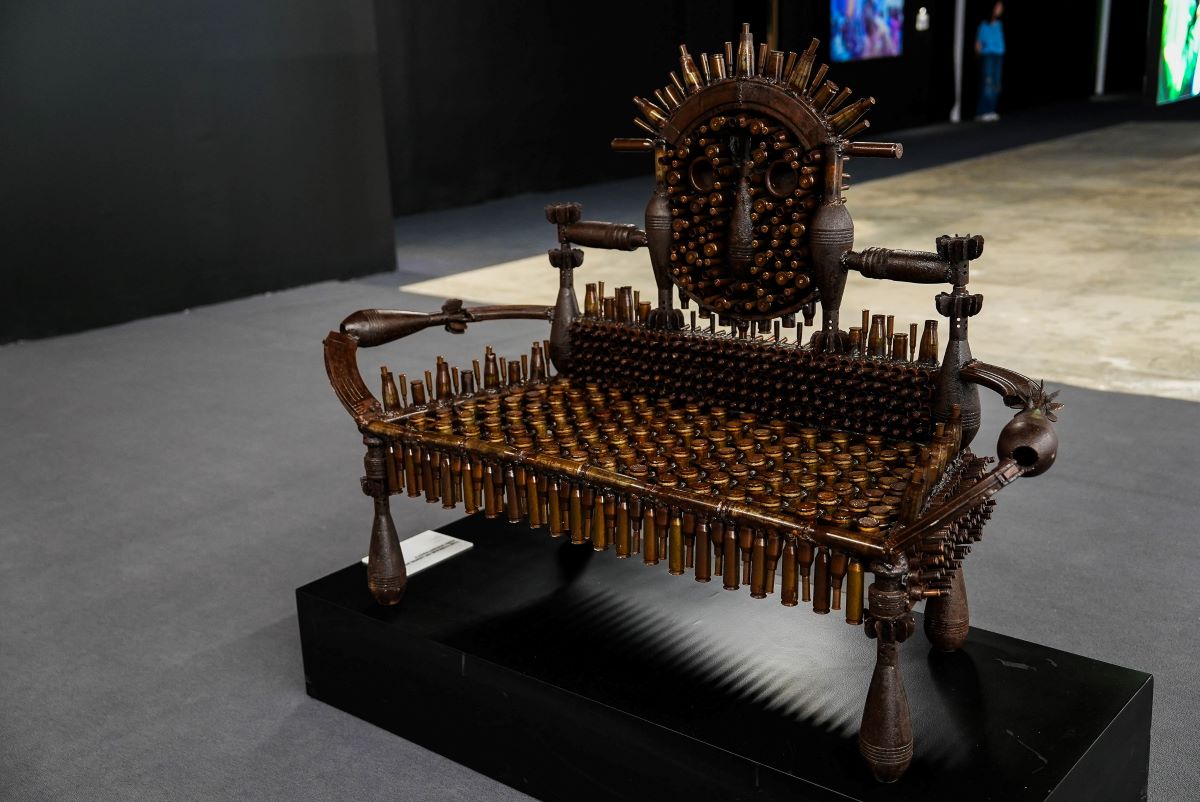
BIRN’s ‘Reporting House’ exhibition in Prishtina, Kosovo. Photo: BIRN/Naser Fejza





